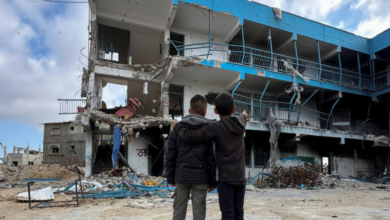The Power of Visual Images in Shaping Public Opinion During the War against Gaza

Introduction: In the contemporary landscape of information dissemination, visual imagery plays a pivotal role in shaping public opinion, particularly in the context of conflicts and wars. The war against Gaza has been marked by intense media coverage, often accompanied by graphic images and videos portraying the human cost of the genocide. In this essay, we will explore the profound impact of visual imagery on public opinion regarding the war against Gaza, and how it has challenged traditional narratives promoted by politicians in the United States and the European Union.
The Role of Visual Imagery:
Visual imagery possesses a unique ability to evoke emotions, provoke empathy, and stimulate action in ways that written or verbal communication alone cannot achieve. In the case of the war against Gaza, the dissemination of images depicting civilian casualties, destruction of infrastructure, and the suffering of innocent people has served to humanize the conflict and bring its realities into sharp focus for audiences around the world leading to university protests led by Columbia university. These images transcend linguistic and cultural barriers, resonating with viewers on a visceral level and compelling them to confront the harsh realities of war and increasing awareness.
Impact on Public Opinion: The proliferation of visual imagery depicting the violence and devastation in Gaza has had a profound impact on public opinion, both domestically and internationally. In the United States and the European Union, where political discourse often emphasizes values such as human rights and democracy, the juxtaposition of these ideals with the stark realities captured in images from Gaza has created a cognitive dissonance for many observers and university students. Politicians who espouse support for these principles while simultaneously providing diplomatic and military backing to Israeli occupation involved in the genocide find themselves facing heightened scrutiny and skepticism from their constituents.
The Role of Social Media:
Social media platforms have played a particularly influential role in the dissemination of visual imagery related to the war against Gaza. With the widespread use of smartphones and the prevalence of user-generated content, individuals have become both consumers and producers of visual media, enabling the rapid spread of images and videos documenting the unfolding events in real-time. This democratization of media has empowered ordinary citizens to shape the narrative surrounding the conflict, bypassing traditional gatekeepers and providing alternative perspectives that challenge mainstream narratives.
Challenges to Political Discourse:
The proliferation of visual imagery depicting the human cost of the war against Gaza has posed significant challenges to political discourse in the United States and the European Union. While politicians may continue to espouse support for human rights and democracy in their public statements, the disconnect between their rhetoric and the realities captured in visual imagery has eroded trust and credibility among their constituents. In an age where images carry undeniable persuasive power, politicians are increasingly held to account for their actions and policies in ways that transcend partisan affiliations.
Conclusion: The impact of visual imagery on public opinion regarding the war against Gaza cannot be overstated. By humanizing the conflict and compelling viewers to confront its realities, images and videos have challenged traditional narratives promoted by politicians in the United States and the European Union. As the proliferation of social media continues to democratize the dissemination of information, the power of visual imagery to shape public discourse and hold political leaders accountable will only continue to grow. In the face of such powerful evidence, politicians must reckon with the consequences of their actions and policies, recognizing that the images of war have the potential to sway public opinion in ways that words alone cannot.
Discover more from Gaza Never
Subscribe to get the latest posts sent to your email.




